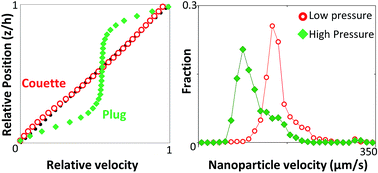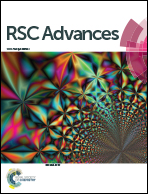Elastohydrodynamic lubricant flow with nanoparticle tracking
Abstract
Lubricants operating in elastohydrodynamic (EHD) contacts exhibit local variations in rheological properties when the contact pressure rises. Direct evidence of this behaviour has only been obtained by examining through-thickness velocity profiles U(z) of lubricants in a contact using luminescence-based imaging velocimetry. In the present study, nanoparticles (NPs) are added to polybutene (PB) as tracers to investigate the effect of pressure on the flow of PB in an EHD contact. By tracking NPs in the contact, particle velocity distributions f(U) under various pressures are obtained and found to be pressure dependent. Results show quantitatively that f(U) and U(z) are correlated and thus confirm that U(z) of PB changes from Couette flow to partial plug flow above a critical pressure. This confirmation highlights the complexity of lubricant rheology in a high pressure contact.



 Please wait while we load your content...
Please wait while we load your content...